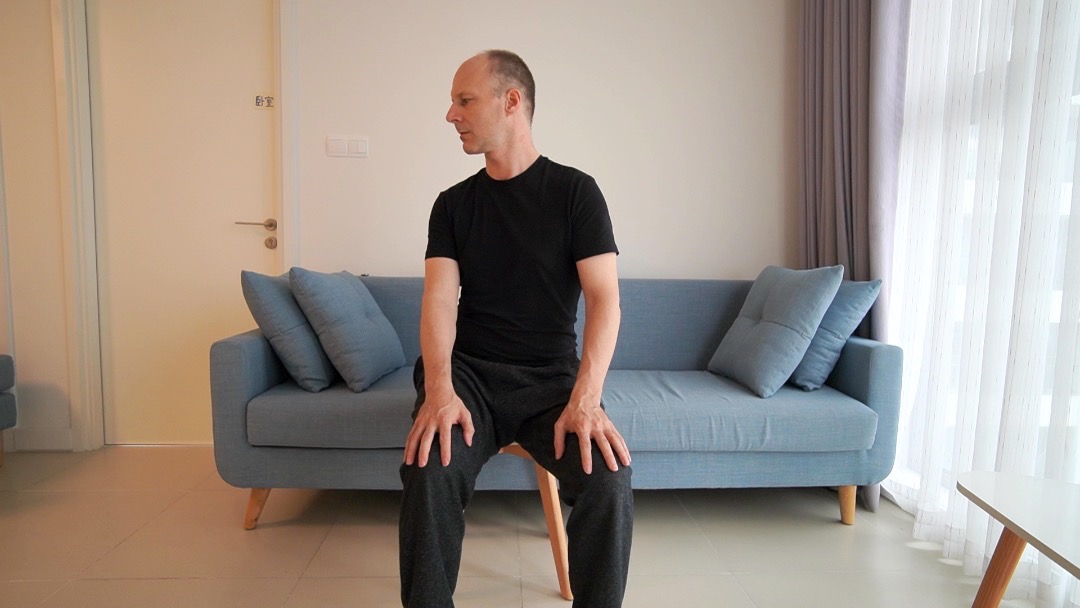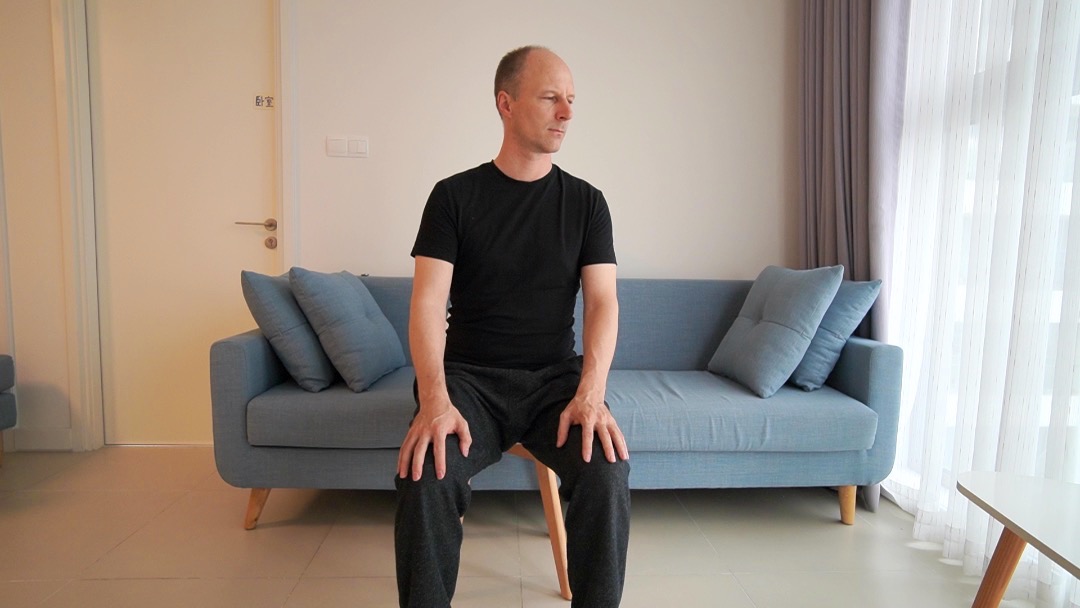Twist in sitting on a chair
In sitting upright, for example on a chair, with the feet placed directly underneath the knees, you turn (twist, rotate, spiral) around your central axis. You start with pushing one knee forwards, and thus rotating your pelvis. The entire spine is rotated as one block, or with differentiations of the eyes, neck, shoulder girdle, and pelvis in relation to each other.
Turning as a block (head, eyes, shoulders, pelvis together) to one side is one of the simplest mode of action learned in early childhood. The nervous system is capable of other, more differentiated patterns of movement. When you learn to differentiate and re-pattern most of your movements, your intentional cortex will lose its compulsive patterns. You will feel taller, lighter, you will breathe better and might even have a sense of euphoria. Furthermore, this lesson improves the way you turn your head to look over a shoulder: in terms of ease, coordination, and smoothness. It enhances your understanding of what is involved with and needed for a twist throughout the spine.
twistsitting twist_in_sitting_1
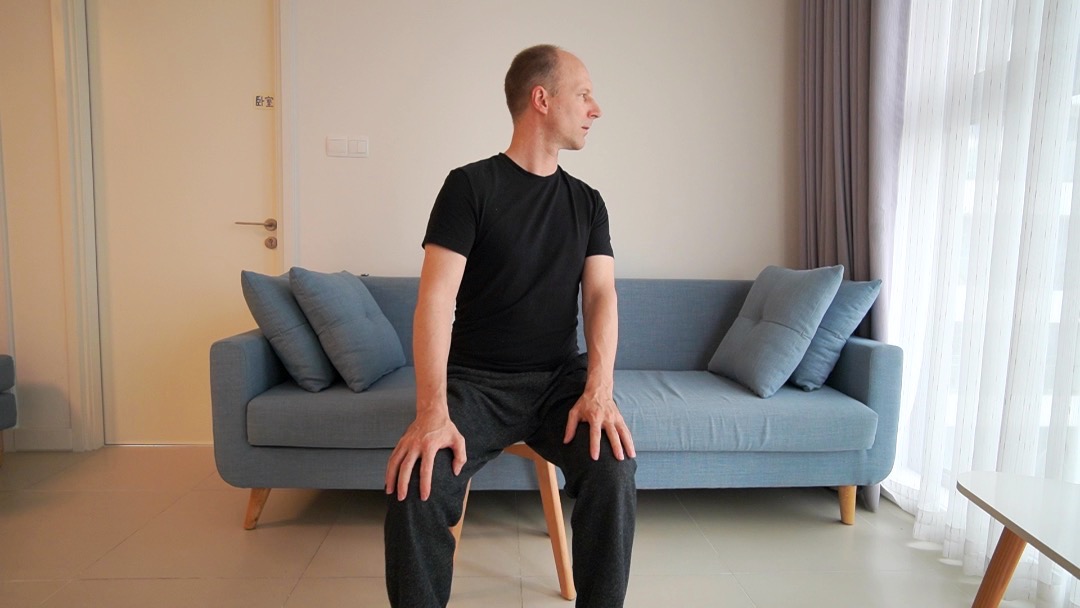
In sitting on a level surface, upper legs parallel to the floor, feet underneath the knees, hands on knees (left hand on left knee, right hand on right knee).
Right knee forwards
Push your right knee forwards. Allow your head, torso, and pelvis to turn to the left together.
- You right sit-bone moves forwards in relation to the left.
Your head and shoulders stay on top of your pelvis and turn to the left, all together like a block.
Right knee forwards
Push your right knee forwards. Allow your head, torso, and pelvis to turn to the left together.
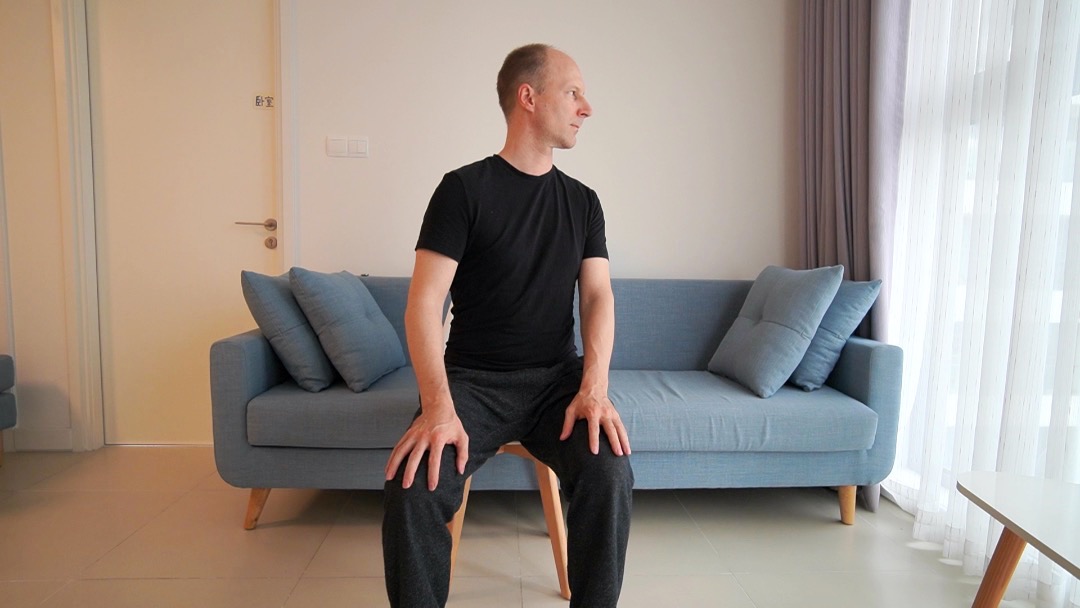
In sitting
Reference movement
Right knee forwards
Observe if, how, and how much it has improved. Compare turning to the left with to the right.
- Did looking over your left shoulder became easier? Do you easily twist a bit further?
Check for differences and how your turning has improved after every movement (differentiation).
Reference movement
Right knee forwards
Observe if, how, and how much it has improved. Compare turning to the left with to the right.
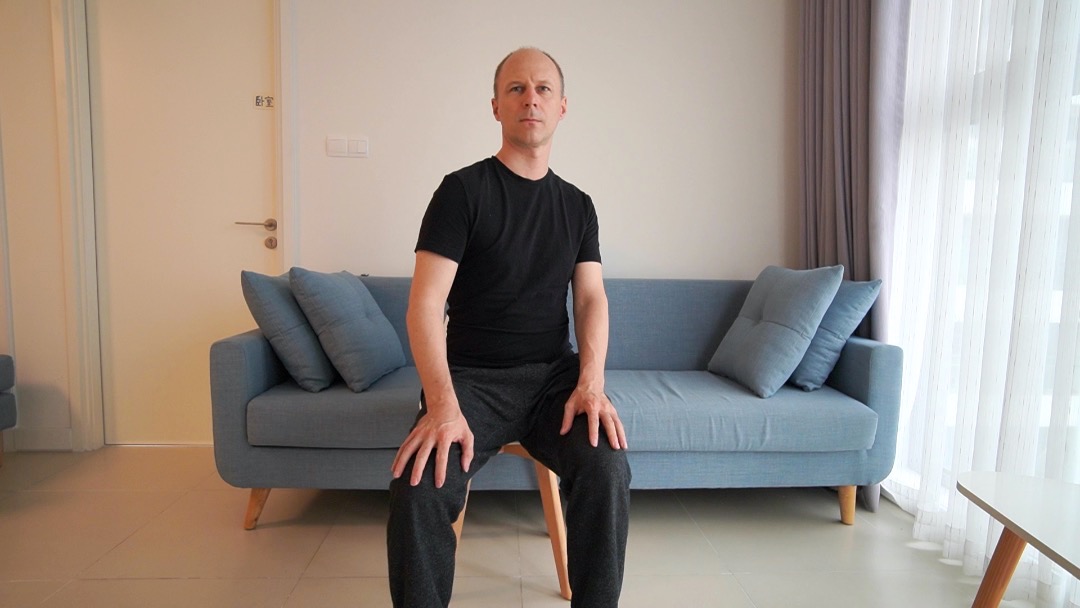
In sitting
Right knee forwards, keep head facing front
Allow your pelvis and shoulder girdle to turn to the left.
- Do this slowly, carefully, and often enough, so that 1. the movement becomes smooth, 2. the head really does not turn, 3. you can keep your neck long and do not shorten it, 4. you do not disturb your breathing, 5. it's the same whether you softly gaze forwards or hold focus onto something with your eyes.
Right knee forwards, keep head facing front
Allow your pelvis and shoulder girdle to turn to the left.
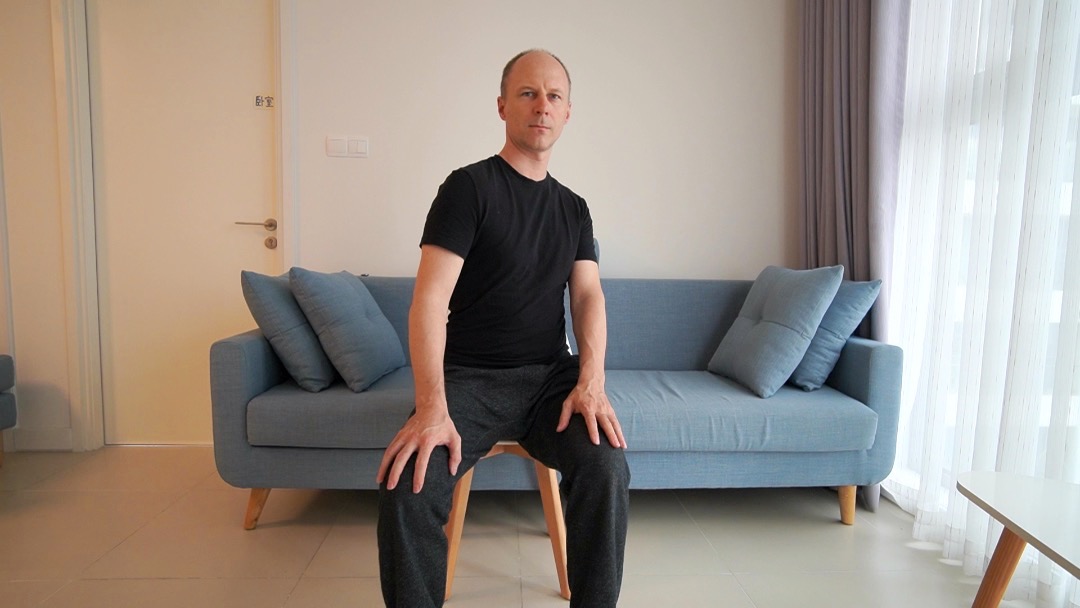
In sitting, right knee in a pushed forward position, upper body turned to the left.
Start turned, return only head to face front
Start with your pelvis, shoulders, and head turned to the left, return only your head to front.
- Instead of starting at the original start position, you now start at the end position (of the first movement in this sequence), which means you are turned to the left.
Keep your pelvis and torso turned to the left, only move your head.
Start turned, return only head to face front
Start with your pelvis, shoulders, and head turned to the left, return only your head to front.
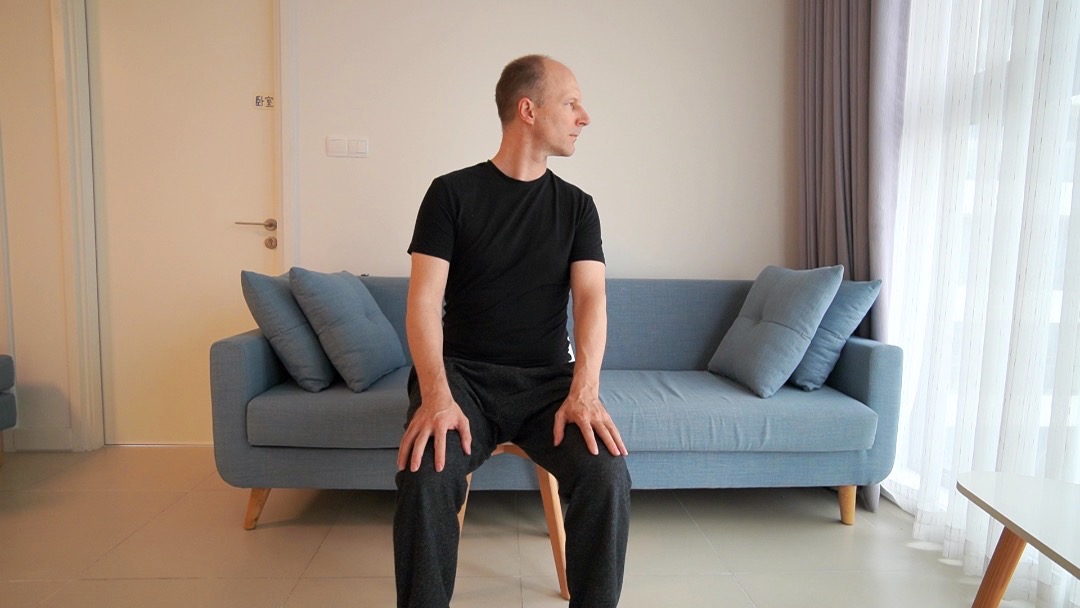
In sitting, right knee in a pushed forward position, upper body turned to the left.
Start turned, return only knee and shoulders to front
Start turned to the left, keep your head turned to the left.
- Start with your right knee pushed forwards, and your head and shoulders turned to the left.
Return your knee and shoulders to the original starting position, but keep your head turned to the left.
Start turned, return only knee and shoulders to front
Start turned to the left, keep your head turned to the left.
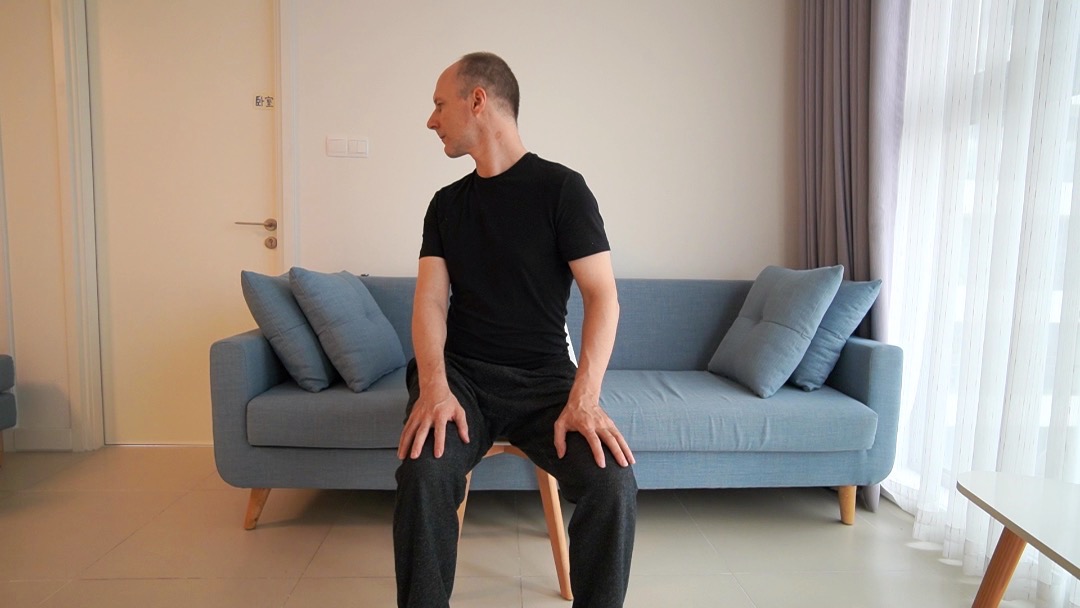
In sitting
Repeat to the right
Push your left knee forwards, let your torso turn to the right. Repeat the last 3 differentiations.
- Keep your head forwards, while twisting your pelvis and shoulder girdle to the right.
Return only your head to face forwards, while staying twisted to the right.
Return your pelvis and shoulder girdle to face forwards, while your head stays twisted to the right.
Repeat to the right
Push your left knee forwards, let your torso turn to the right. Repeat the last 3 differentiations.
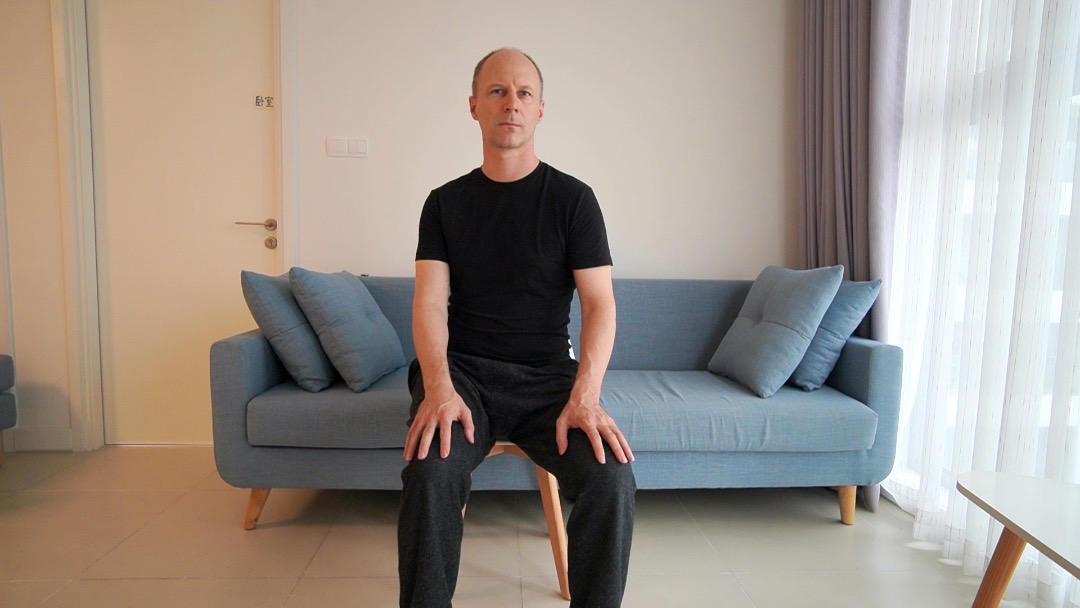
In sitting
Combine twist right and left, keep head forwards
Push once your right and once your left knee forwards, allow your shoulder girdle to follow.
- Keep your head facing forwards, while twisting your pelvis and torso.
Combine twist right and left, keep head forwards
Push once your right and once your left knee forwards, allow your shoulder girdle to follow.
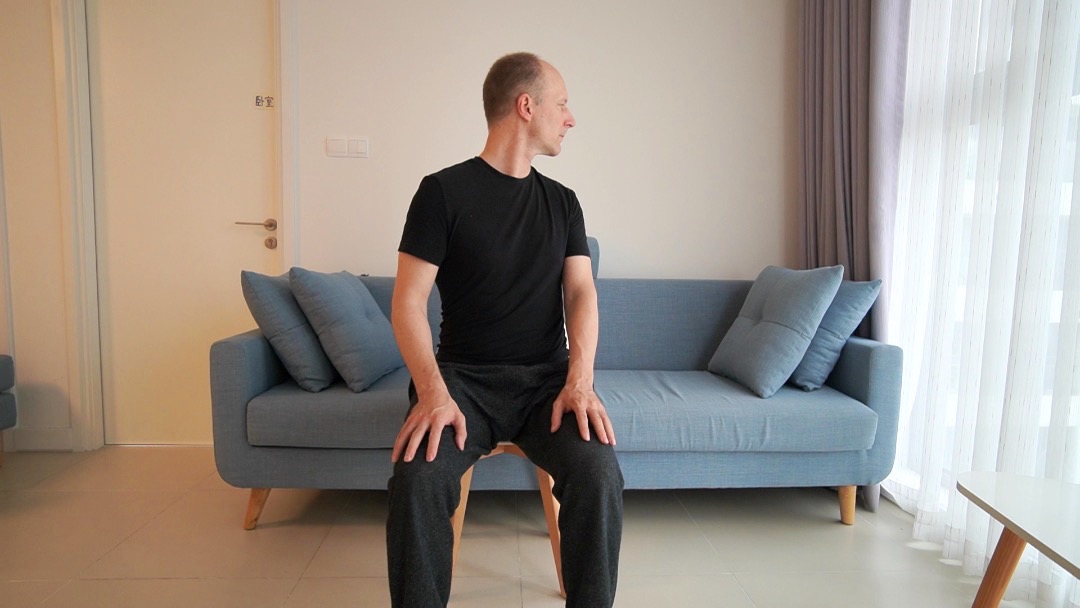
In sitting
Reference movement
Simply turn head right and left
Observe how your pelvis, knees, and shoulder girdle follow the movements of your eyes and head.
Reference movement
Simply turn head right and left
Observe how your pelvis, knees, and shoulder girdle follow the movements of your eyes and head.

